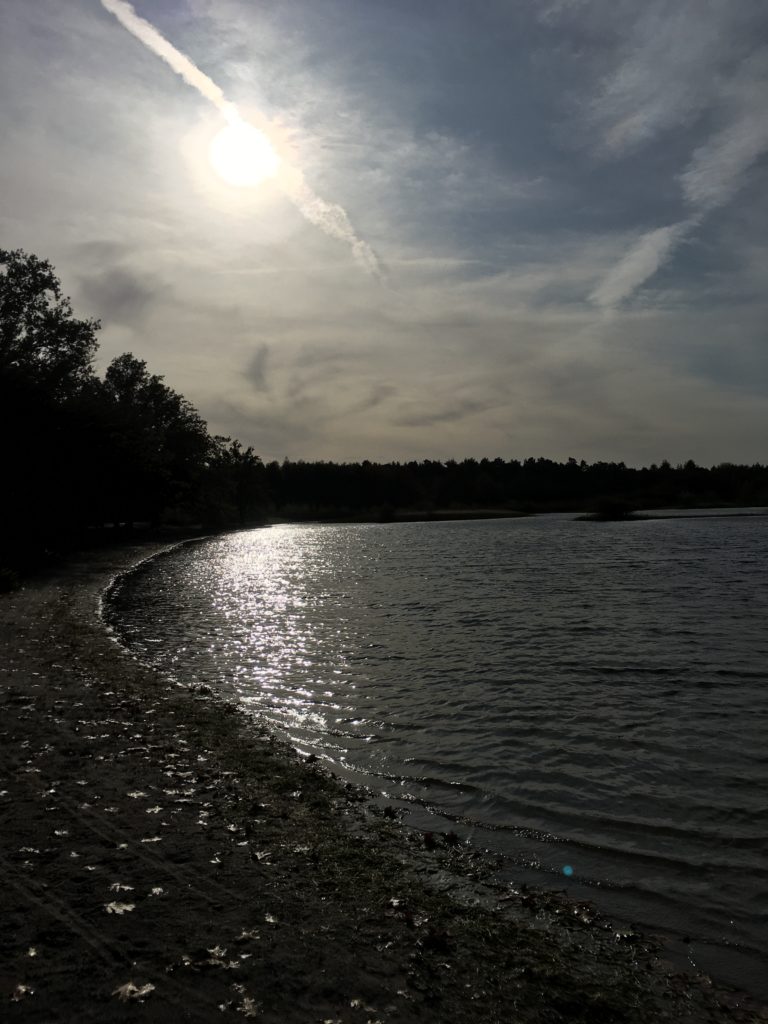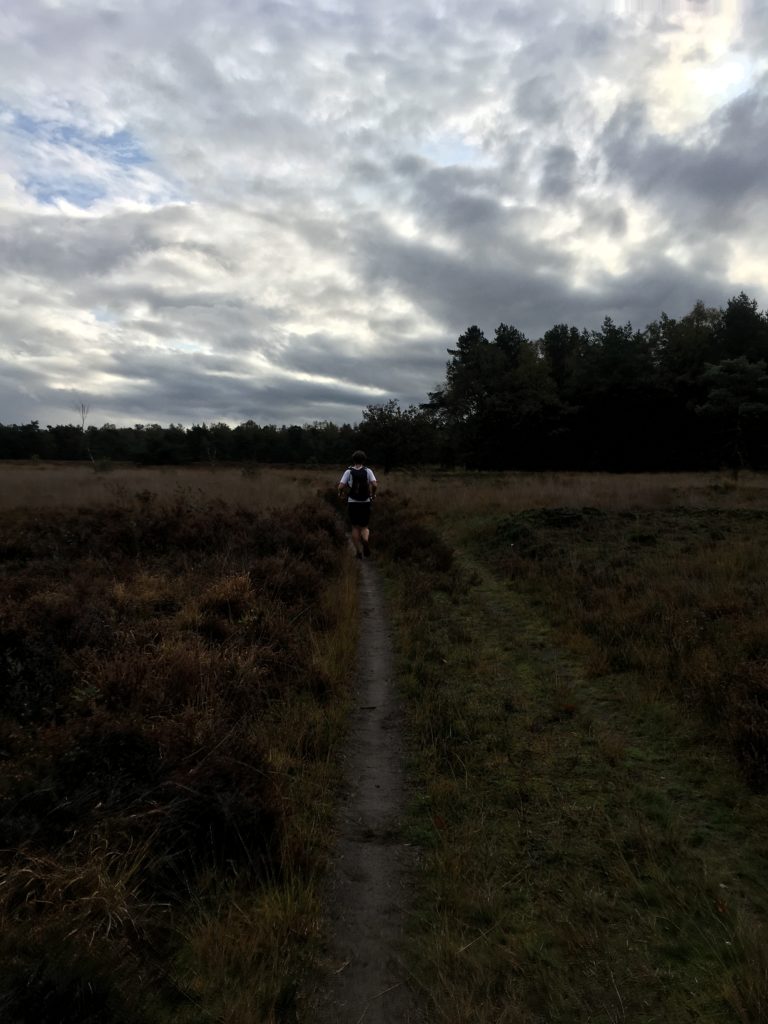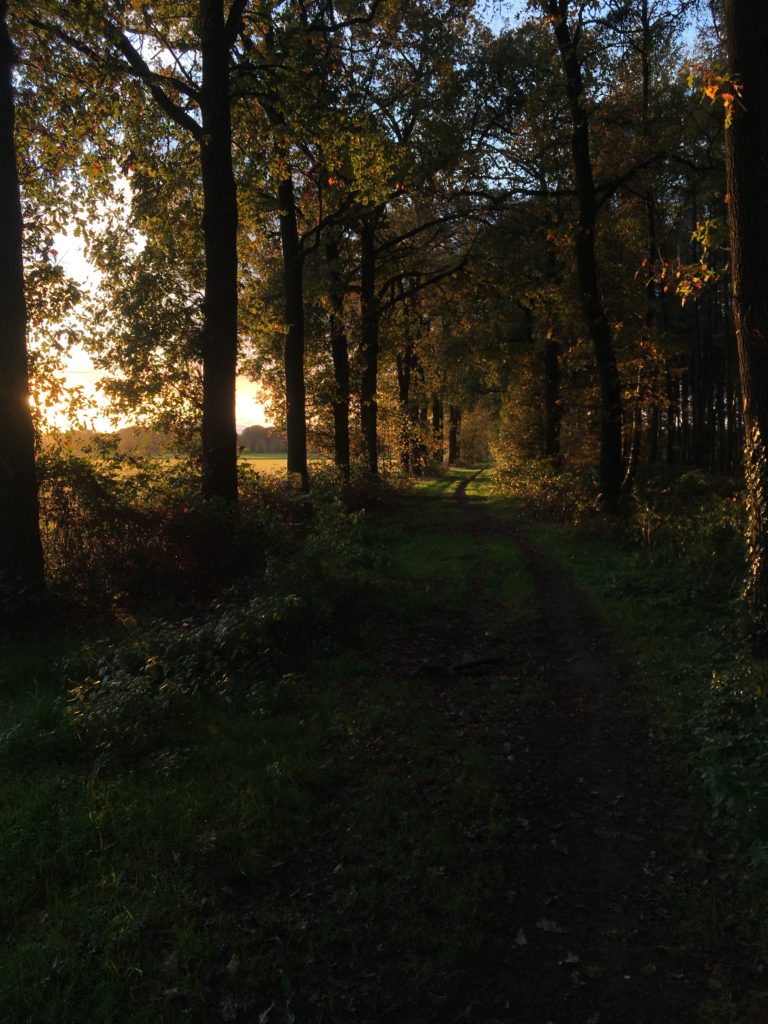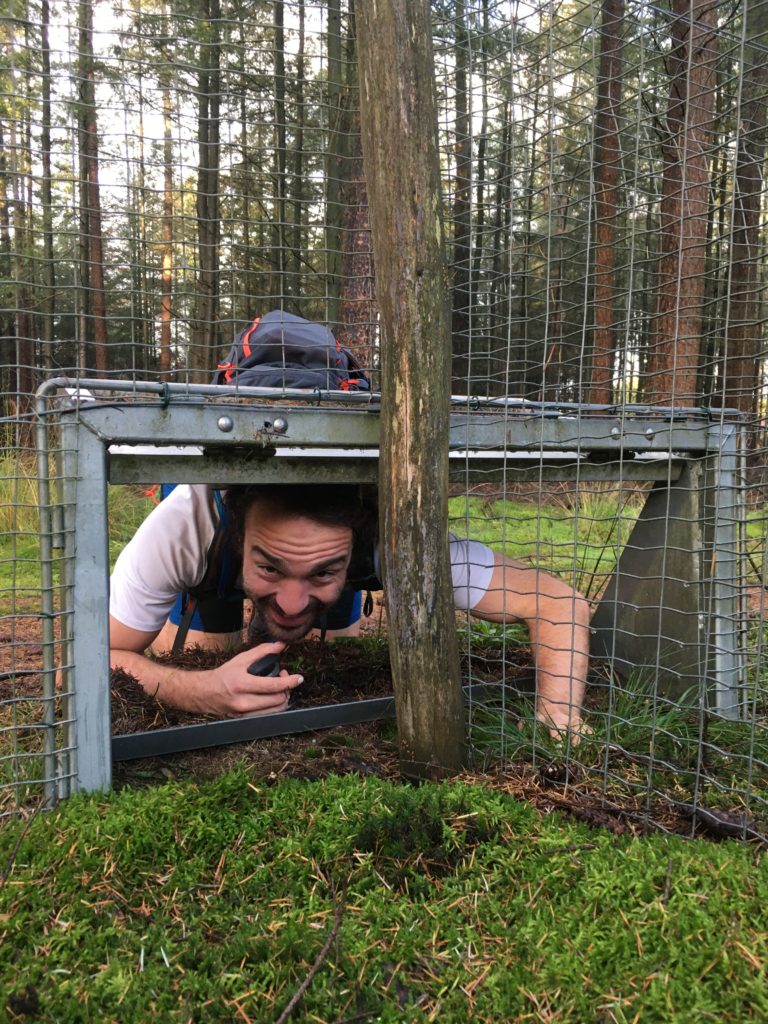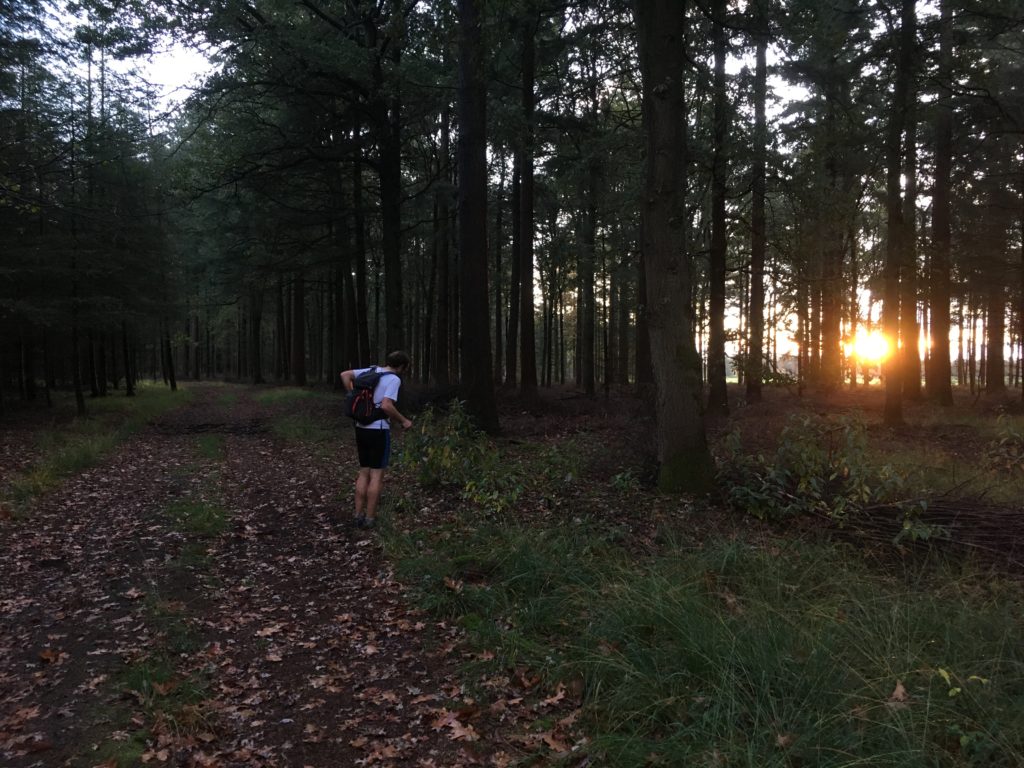Everything started back in November 2016 not with running but with watching the live tracking website of LEOs first edition. I am not sure why and how I came across this link but it was a lucky coincidence. Back in 2016 I was amazed and afraid while watching two lonely dots moving like forever through what seemed to be endless sections of nothing. This should have been a warning..
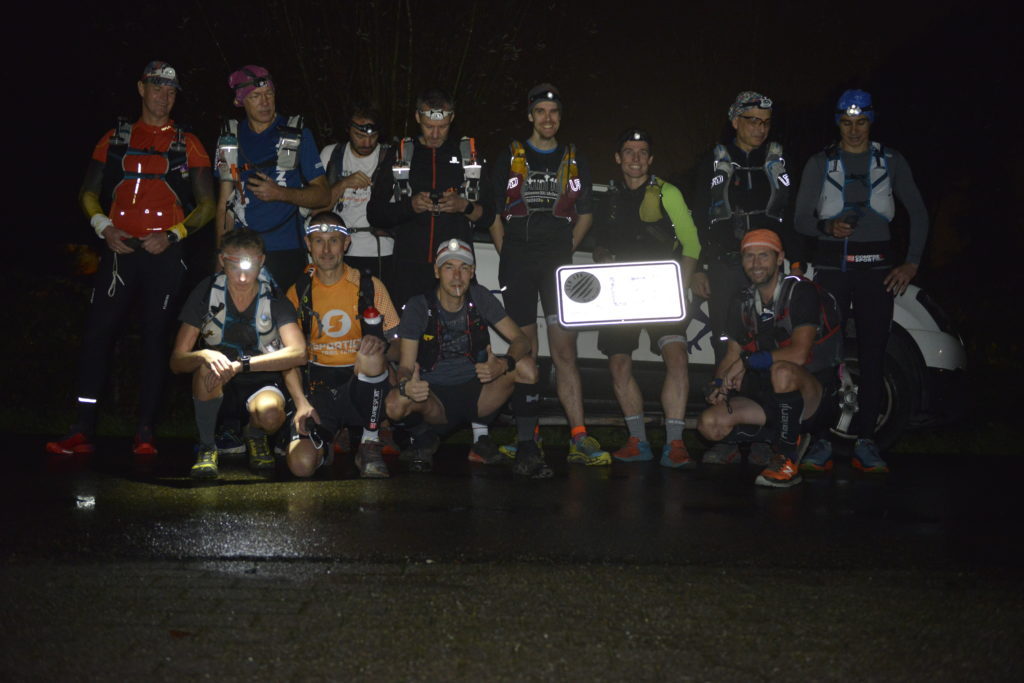
3 years later we are sitting on a table somewhere in Goirle near Tilburg, Noord-Brant, the Netherlands. Martino (2nd place finisher) just left and Maarten, Marek, Björn and me are enjoying a moment of peace and silence. It is 1800 on the first Sunday in November which means the LEO is over. It was again one of the rather busy weekends for all four of us. Although we only see us at the LEO weekends once every year we share a similar idea on how running should be organised and celebrated. This is a good feeling and we use the rare time to discuss a bit. Everything went well with LEO this year so the organisational pressure on M&M is (almost) gone: they dragged out those who could not finish, they celebrated those who were able to survive and the last runner out there should also make it to the finish 2 hours later. The last burger patties are ready to eat. Everything is as it should be. Time to widen the view from this weekend into the future. We discuss the next LEO editions. The good news is: the challenge will continue for those who dare and are fast but there may also be a soft option for those who are slow and winy. Although LEO is held in great irony and fun with a lot of joking and laughing the whole LEO family (runners, orga, supporter) knows deep inside that it is a real challenge for most humans. In our discussion we end up with the question why so few survived this year and what the reason(s) for that might have been. One of the good things with LEO is that there is no final answer to that. LEO may be one of the events where it is better if you are 101% into it – 100% may not be enough. But who knows what battle everyone fought out there. It is your problem if you go out there. You may get random help but basically you have to make sure that your plan is good enough to bring you back.
For Björn and me as participants the task was much easier compared to M&Ms orga stress. Our discussion a few days before the LEO was short. From our point of view there were two reasonable options on how to run the loops in terms of direction and order – we discussed it shortly and made a decision. All we then had to do was what we always do before any of our longer runs: prepare the Garmins, pack the backpacks with an awful lot of self-made food (I also brought some gels which turned out to be a wise decision) and enjoy the surroundings while running. The first two loops formed an 8 of 100 km total distance and we aimed for 7 km/h. We reached the CP close to 2000 – perfect in plan.



We gave ourself one hour to relax. Restart for the last 110 km loop at 2100 with 21 hours time to finish it. The first 40 km of this loop (km 100-140 for us) slowed us down. I could not maintain the 7-8 km/h speed from the first 100 km. From slowing down we got more tired and really cold. The nice ultra run night problem – the interesting part was about to begin. Some tougher hours followed on what is probably the easiest and fastest part of the track – such a waste when walking on asphalt. So we tried to sleep. A few times. With different levels of comfort, durations and cleverness. The last time we did that between 0530 and 0600 helped at the end and we learned a bit more on what makes sense and what does not regarding outside sleeping. But: what happens out there stays out there. Our last hope was the sunrise. We started with giving us rules not to be broken. Not to quit while it is dark was the first one (this one is a really essential one). When it was bright again we had to deal with a section full of sand and small ups and downs. Awful after 150 km with hurting feet and the need to maintain a steady pace. So next rule: do not quit in the Dunes (Björn is probably one of the worlds leading experts in terms of that). We managed it somehow.
And from that on timing was the absolute highest priority. I never did this mental game of running against the clock with this precision. Björn started a „game“. 10 h until cutoff, 57 km to go = 5.7 km/h. The two rules of our game were: run each hour 6 km and then walk the rest of the hour as a break. If you don’t manage this 6 km in 55 min: pause/walk the remaining 5 mins anyway. I had heard from people doing these kind plans but never did it myself. I really hated it in the beginning but realized slowly that if I focus on it and accept it provides a frame for that meaningless and endless moving – something to believe in. So game one. It really worked out in the end. Minimum was 5.5 km in one hour (there were some rather uneven parts of nature to pass) but there were a lot of 6 km hours in and a few of them even above that. We played for 8 hours.

Slowly but surely I realized that it may work to stay in time. Would it be really possible to finish this complicated beast? At 1600 with 2 hours time and around 8 km to go the relief finally came. Nothing but serious injuries would stop us know. What an amazing moment. With 53 minutes left we finished the 210 km LEO180 2019 edition. The bear (DNF) was closer in comparison to last year and it at least felt like that this was not only the extra 10 km. The fight against the time in this dimension and determination was new to me. Thanks to Björn for the idea and the strict rules.
It is time to say goodbye again and to leave the warm table in our cosy race HQ (thanks for opening the door for us this weekend) – „the Germans“ are leaving. Everyone is tired – rest and recovery is urgently needed. It was again an intensive but beautiful weekend in Noord-Brabant. The challenge is completed for now. This years LEO results to be found here and here. Racereports will be posted here.
There will be a new challenge one day that is for sure. Maybe with us, maybe without. We somehow closed our LEO chapter this year:
Björn finished the 190 km edition in 2017 while I was dropping out at 140 km without a good reason …
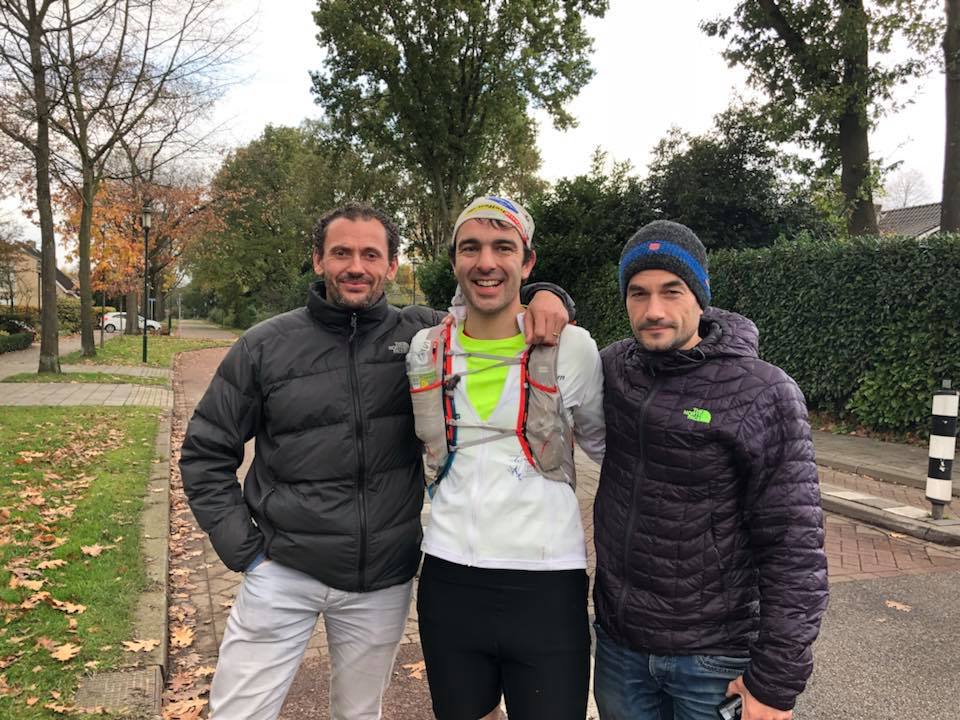
… I finished the 200 km version in 2018 alone while Björn was injured …
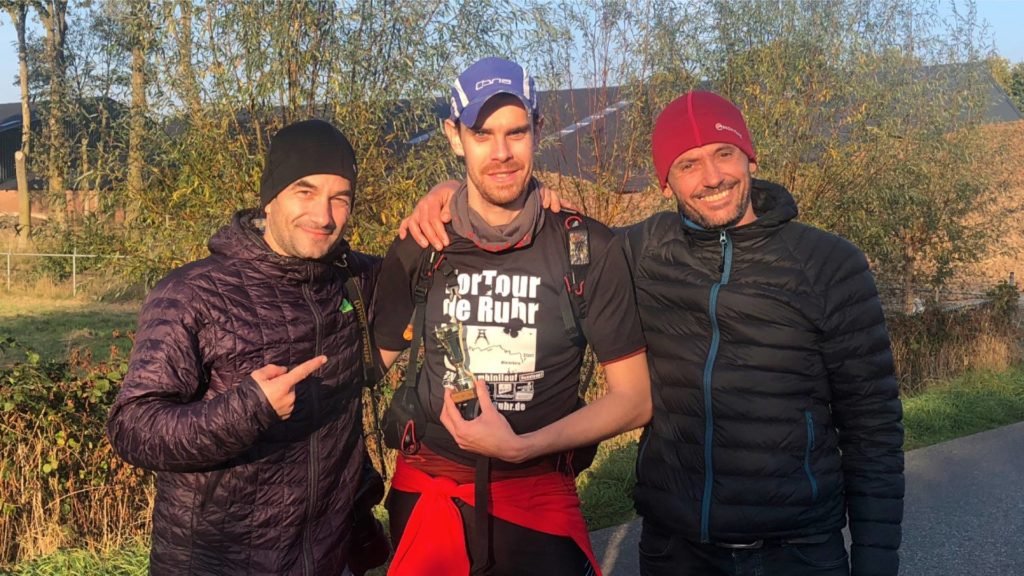
… and we came back this year to finally do it together. Really grateful for this achievement!

Our longest distance together under these conditions (which are our most favourite ones: half self-support, alone, not marked, remote, beautiful and brutal) – isn’t this a nice ending for a story?
It was a pleasure, LEO180! Wat een mooie stuk haardlopen – bedankt en tot ziens!
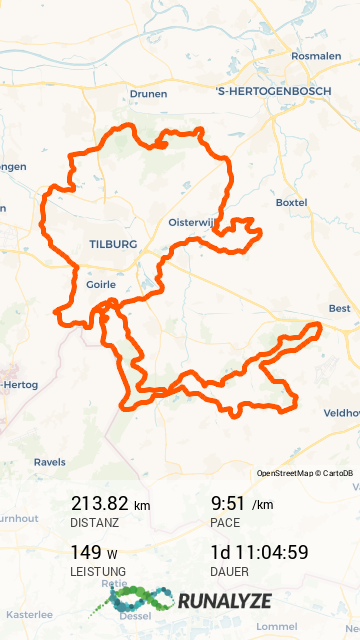
Photocredits to Maarten and Olav – thanks a lot!

